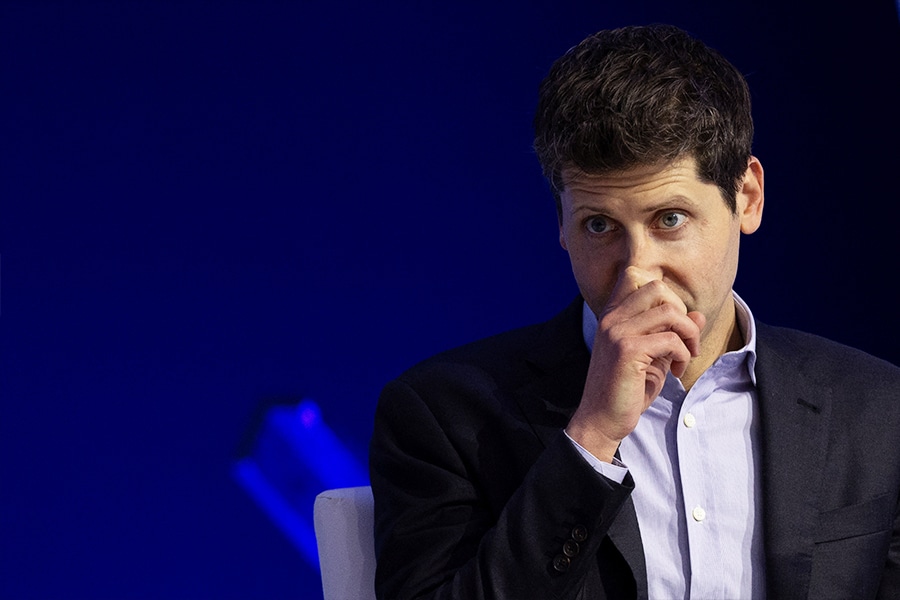
Sam Altman to return to OpenAI, build on Microsoft partnership
An initial new three-member board has been constituted to hammer out the details, which will likely include board seats for Altman and Microsoft
 Sam Altman to return to OpenAI as CEO.
Image: Reuters/Carlos Barria
Sam Altman to return to OpenAI as CEO.
Image: Reuters/Carlos Barria
Sam Altman will return to OpenAI, the company he co-founded and which helped make AI a household term with its ChatGPT bot.
“I love OpenAI, and everything I’ve done over the past few days has been in service of keeping this team and its mission together,” Altman posted on X. “When I decided to join Microsoft on Sunday evening, it was clear that was the best path for me and the team. With the new board and with Satya’s (Nadella, Microsoft CEO) support, I’m looking forward to returning to OpenAI, and building on our strong partnership with Microsoft.”
“We have reached an agreement in principle for Sam Altman to return to OpenAI as CEO with a new initial board of Bret Taylor (Chair), Larry Summers, and Adam D'Angelo. We are collaborating to figure out the details,” reads a post on X from OpenAI.
Taylor is former CEO of Salesforce.com and economist Lawrence (Larry) H Summers is a former US secretary of treasury. Quora CEO Adam D’Angelo remains on the board.
Citing a source with direct knowledge of the negotiations between Altman and OpenAI, The Verge reports that “the sole job of this initial board is to vet and appoint a new formal board of up to nine people that will reset the governance of OpenAI. Microsoft will likely have a seat on that expanded board, as will Altman himself”.
“We are encouraged by the changes to the OpenAI board. We believe this is a first essential step on a path to more stable, well-informed, and effective governance,” Microsoft CEO Satya Nadella said in his post on X.
Altman was abruptly fired from the company on November 17 and, two days later, Nadella announced Altman was joining Microsoft to lead a new advanced AI research unit.
Microsoft, expecting to welcome any of the 770 OpenAI researchers who leave to join it, is said to be readying workspaces at its LinkedIn office, complete with Macbook laptops, Axios reported earlier today.
About 95 percent of OpenAI staff had threatened to leave and follow Altman if the board of OpenAI doesn’t resign, making way for his return.
What’s happened “highlights the growing rift between the proponents of a more measured rollout of the technology, that emphasises safety guardrails above commercialisation and monetisation of solutions. This could have deep-reaching implications for the market,” Beatriz Valle, senior technology analyst at the UK based consultancy GlobalData, said in an email yesterday.
The events also shine a light on the legal structure of OpenAI, which was founded in 2015 as a non-profit company and adopted a new structure in 2019, following Microsoft’s involvement, Valle writes.
The company’s founding charter still allowed the four-person board to fire Altman.
OpenAI is controlled by its non-profit board, which has no fiduciary obligations towards stakeholders or investors, she points out.
The previous board included Ilya Sutskever, Quora CEO Adam D’Angelo, tech entrepreneur Tasha McCauley and Helen Toner of the Georgetown Center for Security and Emerging Technology.
Also read: Sam Altman 'in the process' of joining Microsoft, Satya Nadella says
Casey Newton, whose tech newsletter Platformer is widely followed, pointed out in his November 21 letter that Toner had the power under the company’s charter to halt OpenAI’s efforts to build an artificial general intelligence.
Sutskever, who was known within mostly the AI community, is seen as a brilliant scientist—the star student of Geoffrey Hinton, considered the godfather of AI—who helped his teacher kick off the deep-learning revolution, The Atlantic notes in the opening lines of a piece the rest of which is behind a paywall.
After a short stint at Google, Sutskever co-founded OpenAI in 2015, and went on to become its chief scientist, according to The Atlantic. Sutskever has now willy-nilly become the face of those who favour a safety-first approach to AI research and commercialisation. He also, ended up playing a central role in ousting Altman, no longer just the global face of AI, but of the business of AI.








